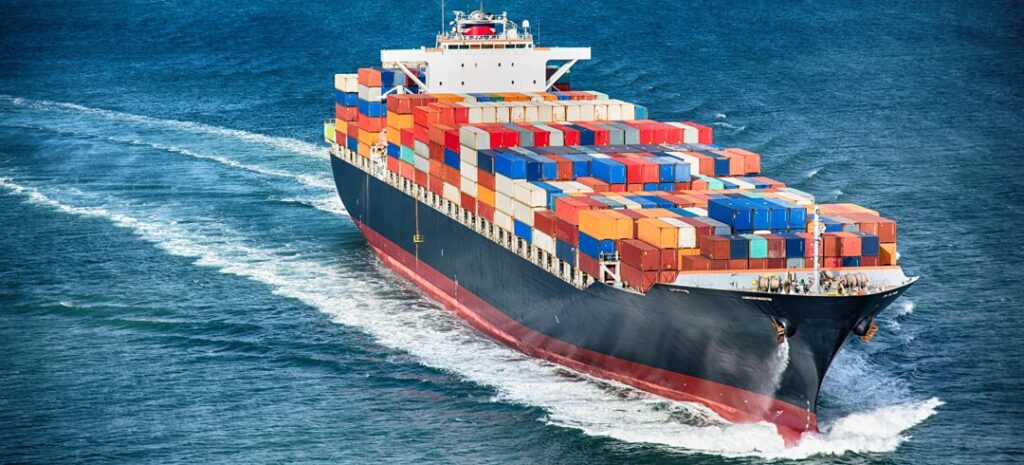Capitalizing on the burgeoning trade route between China and Mexico necessitates a deep understanding of ocean freight logistics. This article equips businesses with the necessary knowledge to navigate this vital transportation channel effectively. We delve into the intricacies of ocean freight shipping, exploring its advantages, crucial considerations, cost-saving strategies, and best practices for a seamless import-export experience.
Understanding the Basics of Ocean Freight Shipping

Ocean freight, the transportation of goods by sea in large containers aboard massive vessels, is the backbone of global trade. Containerization, a standardized approach to packing and shipping cargo, has revolutionized ocean freight, enabling efficient and cost-effective movement of vast quantities of goods across continents.
Here’s a simplified breakdown of the process:
- Export Declaration: The exporter in China initiates the process by filing an electronic export declaration with customs authorities.
- Inland Transportation: The cargo is trucked from the origin factory in China to a designated port city.
- Customs Clearance: The shipment undergoes customs inspection at the port of origin in China. Upon approval, it’s loaded onto a container vessel.
- Ocean Voyage: The vessel embarks on its journey to the designated port in Mexico.
- Customs Clearance: The shipment is cleared by Mexican customs upon arrival.
- Inland Transportation: The cargo is transported by truck from the port of arrival to its final destination in Mexico.
Choosing the Right Container: Full Container Load (FCL) utilizes an entire container for your exclusive use, ideal for large shipments. Less Than Container Load (LCL) consolidates cargo from multiple shippers into a single container, suitable for smaller shipments.
Advantages of Ocean Freight Shipping from China to Mexico
Cost-effective: Ocean freight offers the most economical method for transporting large volumes of goods over long distances compared to airfreight.
High Capacity: Container vessels can transport massive quantities of cargo, making them suitable for bulk shipments.
Diverse Cargo Handling: Ocean freight accommodates a wide range of cargo types, from dry goods and machinery to vehicles and temperature-controlled products (with reefer containers).
Established Infrastructure: Decades of development have resulted in a well-established global network of ports, shipping lines, and logistics providers, ensuring efficient movement of cargo.
Route Flexibility: Numerous shipping routes connect major ports in China and Mexico, catering to specific needs and delivery timeframes.
Key Factors to Consider Before Shipping from China to Mexico

Planning and Preparation:
- Lead Time: Factor in ocean travel time (typically 3-6 weeks) and customs clearance procedures into your overall delivery timeline.
- Incoterms: Clearly define responsibilities (costs, risks) between buyer and seller using Incoterms (International Commercial Terms). Common options for ocean freight include FOB (Free on Board) and CIF (Cost, Insurance, and Freight).
- Commodity Classification: Identify the Harmonized System (HS) code for your goods, which determines customs duties and regulations.
- Packaging and Labeling: Ensure cargo is packaged securely using appropriate materials to withstand extended ocean travel and potential inclement weather. Comply with all labeling requirements for both China and Mexico.
Cost Considerations:
- Ocean Freight Rates: Negotiate rates with shipping lines based on factors like container size, cargo type, and destination port. Research additional costs like terminal handling charges and bunker surcharges (fuel price adjustments).
- Inland Transportation: Factor in trucking costs from origin factory to port in China and from destination port to final delivery location in Mexico.
- Customs Duties and Taxes: Research and budget for applicable import duties, taxes, and any value-added tax (VAT) levied by Mexican authorities.
Choosing the Right Shipping Method and Carrier for Your Cargo

FCL vs. LCL: Consider shipment volume. For large quantities, FCL offers cost efficiency and faster transit times. LCL is cost-effective for smaller shipments, but consolidation can add to overall delivery time.
Transit Time vs. Cost: Opt for expedited services for faster delivery at a premium cost, or prioritize cost savings with standard shipping times.
Carrier Reputation: Research shipping lines for factors like reliability, track record, customer service, and port coverage in China and Mexico.
Specialized Services: Certain cargo types might require specific handling. Choose carriers with expertise in reefer containers for temperature-sensitive goods or oversized cargo handling capabilities for project cargo.
Navigating Customs and Documentation Requirements
Essential Documents:
- Commercial Invoice: A detailed breakdown of the shipment’s value, including product descriptions, quantities, and unit prices.
- Bill of Lading (BOL): A legal document issued by the carrier serving as a contract of carriage and receipt for your goods.
- Packing List: An itemized list of the goods in the shipment, including quantities, weights, and dimensions for each item.
- Certificate of Origin: A document certifying the country where the goods were manufactured.Mexican Import Permit (if applicable): Certain goods might require import permits from Mexican authorities.
Partner with a Customs Broker: The complexities of customs regulations can be daunting. Consider partnering with a licensed customs broker in Mexico to ensure smooth clearance and avoid delays or penalties. They can assist with:
- Classification of your goods under the HS code.
- Preparation and submission of required customs documentation.
- Liaison with Mexican customs authorities on your behalf.
Saving Money on Ocean Freight Shipping Costs

Several strategies can help you optimize your budget for ocean freight from China to Mexico:
- Negotiate Rates: Shipping lines are open to negotiation, especially for frequent shippers or large volumes. Obtain quotes from multiple carriers and leverage competition to secure the most favorable rates.
- Optimize Container Utilization: When using FCL, ensure efficient packing to maximize container space and avoid paying for unused space. Consider using dunnage (packing materials) to fill empty voids and secure cargo.
- Consolidate Shipments: If utilizing LCL, explore the possibility of consolidating multiple smaller shipments into a single container to reduce overall costs per unit.
- Plan for Off-Peak Seasons: Ocean freight rates fluctuate throughout the year. Consider scheduling shipments during off-peak seasons (typically outside major holidays) to potentially secure lower rates.
- Incoterms Selection: Choosing the right Incoterms can impact costs. FOB places responsibility for origin-side charges on the seller, while CIF shifts those costs to the buyer. Evaluate which option best suits your negotiation leverage and budgetary needs.
Tips for Packaging and Securing Your Cargo
- Use High-Quality Materials: Employ sturdy cardboard boxes, wooden crates, or ISPM 15-compliant pallets (for wooden packaging) to withstand the rigors of ocean travel.
- Proper Palletization: Secure cargo firmly to pallets using straps, bands, or shrink wrap to prevent movement and potential damage during transport.
- Filling Voids: Utilize dunnage materials like packing peanuts, bubble wrap, or air bags to fill empty spaces within boxes or containers and prevent shifting of cargo.
- Desiccant Packs: Include desiccant packs within containers, especially for moisture-sensitive goods, to absorb excess humidity and prevent cargo damage.
- Clear Labeling: Ensure all packages are clearly labeled with essential details like contents, weight, fragility (if applicable), and handling instructions.
Tracking and Monitoring Your Shipment
- Bill of Lading Tracking: The Bill of Lading (BOL) issued by the carrier provides a unique tracking number for monitoring the shipment’s progress throughout the journey.
- Online Tracking Systems: Most reputable shipping lines offer online tracking systems where you can input the BOL number to view real-time updates on the shipment’s location and estimated arrival time.
- Communication with Carrier: Maintain open communication with the shipping line for any questions or concerns regarding your shipment’s status.
By implementing these comprehensive strategies, businesses can navigate the complexities of ocean freight shipping from China to Mexico with greater efficiency, cost-effectiveness, and peace of mind.




